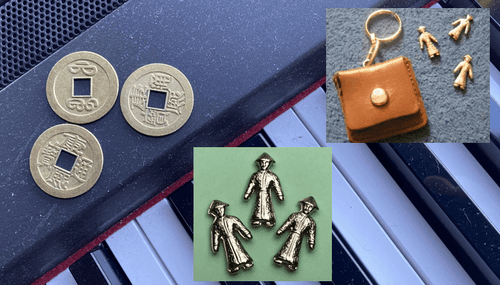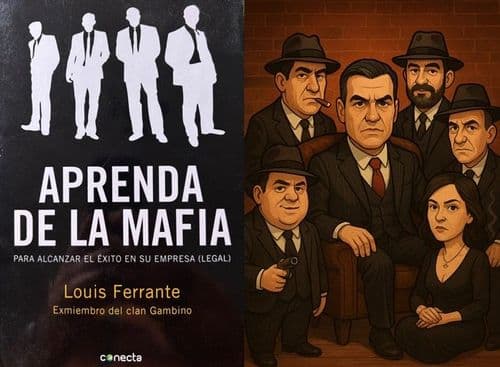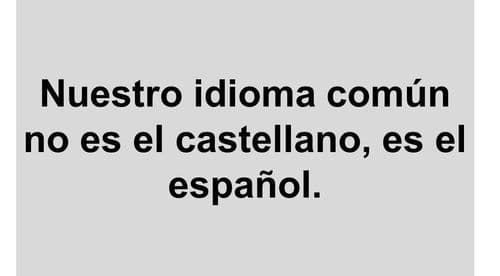
The three coins game
Playing the “three coins game” (Los chinos in Spanish), is something that, most likely, will go out of fashion. It could be endangered. It was played mainly on two playing fields: the bar and in restaurants, after a good meal.
In bars, playing the Chinos was a must. We would get three coins and ready to play. Today, possibly among the public under 30 years old, the game is neither usual nor possibly known. That mythical phrase after the beers, "we play Chinos and the loser pays” might soon become history.
Interestingly, the game has nothing to do with China, it is very Spanish. Apparently, the game was born in the province of León, in a rural environment, among shepherds who begin playing with three stones, back in the eighteenth century. It even gets to name the shepherd who played it for the first time, Felipe Valdeón Triguero in the Leonese town Bercianos del Real Camino.
According to what is written, in 1987 the first national chinos championship was held and in 2012 the championship was still alive.
More than a game, the Chinese are an entertainment, a diversion, everyone can play without distinction of sex, age or religion. We always talk about the psychology of the game, the importance of stay tuned, memorizing what each player gets and, of course, a bit of luck. But the truth is that mathematics also influences.
How to play
It is played with three coins, stones or "Chinese". Each player can draw 0, 1 2 or 3 stones and it is about guessing the total number of coins among all players. In the closed fist, each player takes a few coins, the fist is shown so that all players can see them and, by turn, a number is said to guess the total number of coins. Whoever gets it right wins and additional rounds are played until the last one loses the game, and pays for the beers, coffees or whatever was at stake.
The first player has a certain advantage and therefore, the turn is rotating. You cannot lie, that is, the number that is said must be possible and the numbers cannot be repeated. From 5 players, it is important to remember the number that each has selected. It is convenient to make a "quadrant" to prevent the “clever” player from leaving the game. The “clever”, there is always one. The typical player who, when the round is finished, raises his hand, and making the farewell gesture says "gentlemen, I won"... and he nominates himself as the winner pretending to have guessed the right number when the number he said was a different one. Hence the importance of the control quadrant.

Quadrant for three coins game - large number of players
The game transcends countries. In our working days, at lunch, the “chinos game” played in our table, became famous. We have played with co-workers from a large number of countries, and from at least 4 continents. All those who could do it, sat at our table to, after lunch, participate in the ceremony of playing for the coffees to the chinos. Winning was not the most important thing. It was important to see the loser going through the company's dining room, to the bar, asking for the order, and return with a full tray. Sometimes, you could even hear applause to make more visible who lost.
Requesting the "command" was also difficult. We were usually between 8-12 people, but I must admit, was notably facilitated by Carmen´s brain, she will be the only person I quote. Carmen had in her mind what type of coffee or tea each one of the almost 300 people who worked in the center wanted. Also, if we wanted it with sugar or saccharin, short or long coffee, American, with hot or warm milk and sometimes added some tip pastries.
Some players even created their own dictionary to play with. In this way they never said 5, but the hand of a child, the number 7 was the little team (for the number of players of a handball team), and when the same number of the previous hand was repeated, they said "ardanar", which meant erre que erre, in a very, very colloquial English.
Some colleagues from other countries, now retired, who had the opportunity to play, still remember the "three coins game".
As I said, mathematics has an influence. With 2 players, the highest probability combination is 3 and with 3 players it will be 4 and 5.
The total number of appearances is 4 n where n is the number of players. Hence the importance of the output being rotating. Whoever goes out, has a slight advantage because is able to say the numbers of greater probability.
Today, after many years, and with many additions of younger players, the tradition remains alive. We are still playing when we see each other and the game after the annual Christmas meal between colleagues and former teammates, actually friends, closes the year, and hopefully will be like that for a long time.
Comments
There are no comments.



